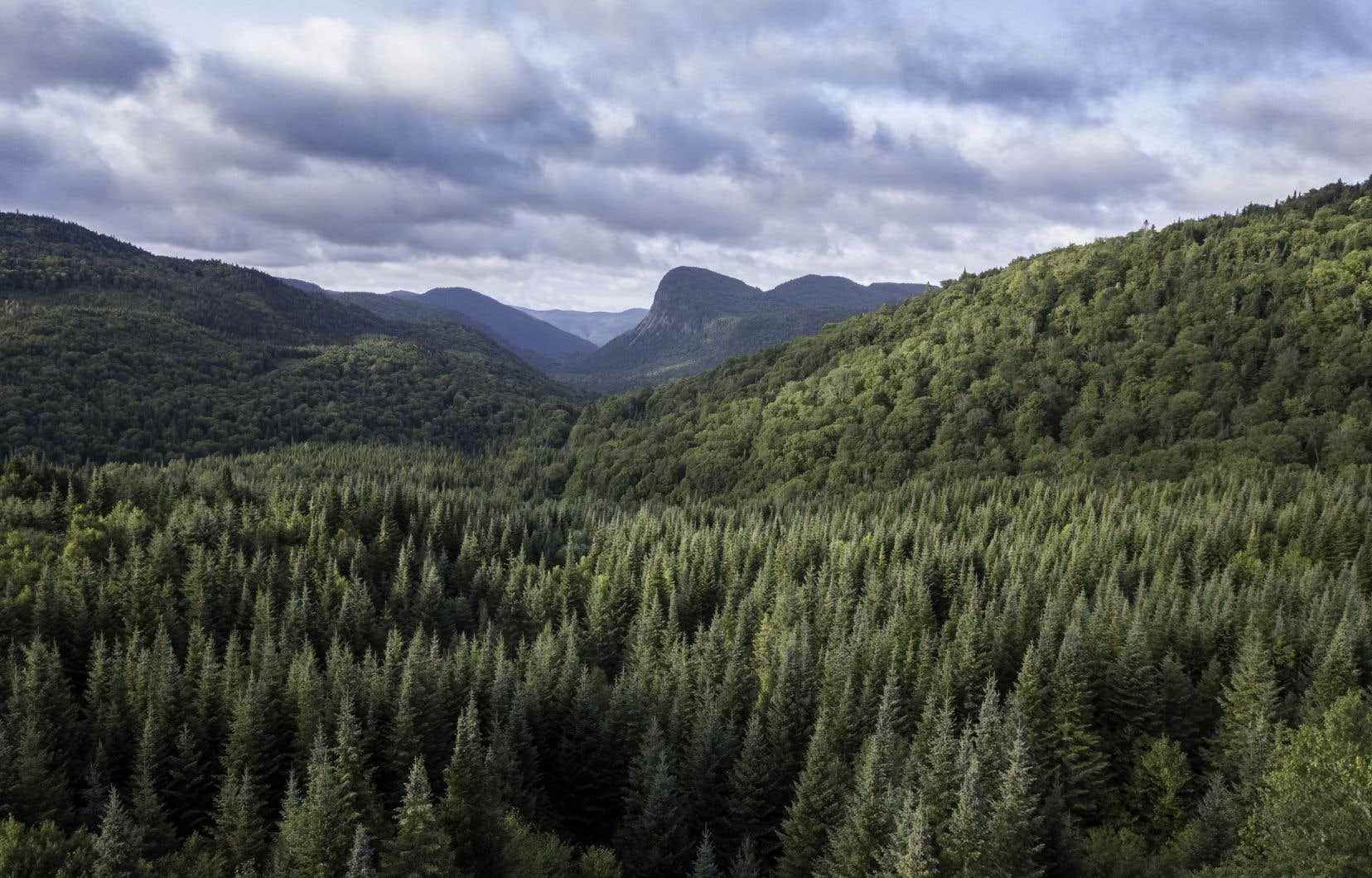Although Quebec forests sequester a lot of carbon dioxide (CO2), it could do more to help us fight global warming. Here’s why and how.
2.2%
While the area of Quebec accounts for 1.1% of the land surface of the planet, our forests correspond to 2.2% of the forest surface of the Earth, indicates the Ministry of Forests, Wildlife and Parks. This abundance of trees, inherited from the last deglaciation around 10,000 years ago, is an “underestimated wealth in its potential contribution to the fight against climate change”, considers Claude Villeneuve, biologist and full professor at the Department in basic sciences from the University of Quebec at Chicoutimi (UQAC), where he is also director of the Chair in eco-advice. “We have unique resources in the world. We must use them even better than we do by increasing the forest carbon sink,” he says.
Lots of trees, but enough?
Quebec forests capture 25 to 30% of the 130 million tonnes of CO equivalent2 (CO eq.2) sequestered each year by Canadian forest lands, assesses the professor of eco-advice at UQAC Jean-François Boucher. According to this estimate, our trees trap almost half of Quebec’s total emissions annually (Ministry of the Environment and the Fight against Climate Change, 2019). But let’s not rejoice too quickly! “Forests also produce CO2 when it burns or when it decomposes after being ravaged by insects,” recalls the researcher. Thus, with the multiplication of fires over the past 20 years combined with epidemics of parasites, the scientific community estimates that the Canadian forest now captures as much CO2 that she emits.
Diversify our woodlots
If we want forests to continue to help us sequester CO2, we must, among other things, rethink our woodlots, argues Christian Messier, professor of forest management and biodiversity at the University of Quebec in Montreal (UQAM) and in the Outaouais (UQO). Indeed, 45% of forests managed for timber harvesting in Canada are made up of only one or two species, he points out, including many spruces. This mono- or duo-culture of species for commercial purposes has led to a loss of resistance and resilience of the woodlands. With climate change, trees become more vulnerable to fires, insect pests or drought. “It’s the portfolio effect: the more our forests are diversified, the lower the risk of losing everything”, sums up Christian Messier.
Wood, a multifunctional material
Gathered within the Working Group on Forests and Climate Change (GTFCC), researchers from Laval University (UL) and UQAC have calculated that improving the management of Quebec forests could reduce our gases to greenhouse effect (GHG) up to 10.4 Mt eq. CO2 per year by 2050. This represents approximately 12% of the province’s carbon footprint (Ministère des Forêts, de la Faune et des Parcs, 2019). “To achieve this, we must reforest more in order to increase the absorption of CO2 and to increase harvesting of wood, a sustainable and exploitable material in the transition to a low-GHG economy, says Évelyne Thiffault, engineer and professor in UL’s Department of Wood and Forest Sciences. The forest is a fantastic reservoir”, she illustrates. In buildings, wood can replace cement and steel, two very energy-intensive materials to manufacture. Low-quality or non-marketable wood, as well as the considerable quantities of residues, can in turn produce other outlets, such as renewable energy, by replacing oil and gas.
60%
The 29million cubic meters of wood felled in Quebec in 2019 represent approximately 60% of the maximum harvestable quantity to allow the renewal of the Quebec forest. In other words, we could sequester more carbon by increasing stands and harvesting, says Professor Jean-François Boucher, who contributed to the work of the GTFCC. “Our forest regime has been exemplary since 2013, because even if it has imperfections, it can be described as sustainable. This does not mean that it is efficient in a logic of combating climate change. »
CO2 stick
A cubic meter of “2 by 4” contains 500 kilos of CO equivalent2, estimates Claude Villeneuve, who has planted more than 1.5 million trees over the past 20 years thanks to Carbone Boréal, a UQAC research infrastructure that has quantified the carbon sink potential of trees. “In other words, lumber is CO2 in sticks, and Quebec exports millions of cubic meters of it per year”, underlines the researcher, who regrets that this contribution to the fight against climate change is not counted in the provincial and national GHG inventories. An imperative, according to him, if we want the forest to be considered as a solution to the vagaries of the climate by governments and forestry stakeholders.
This special content was produced by the Special Publications team of the To have to, pertaining to marketing. The drafting of To have to did not take part.
